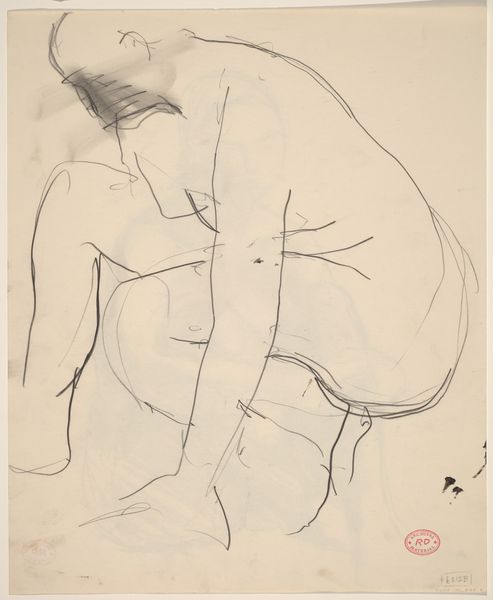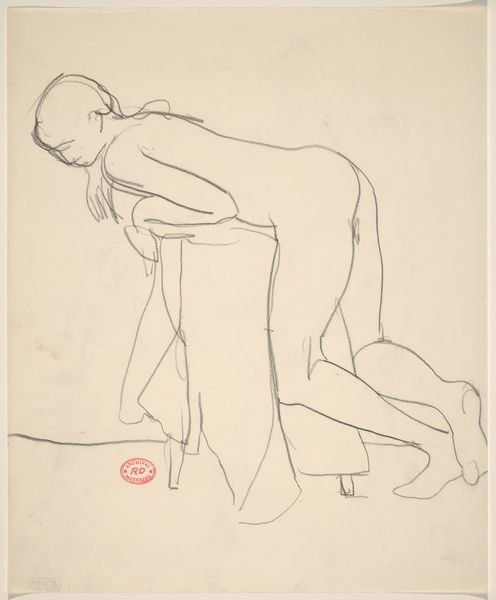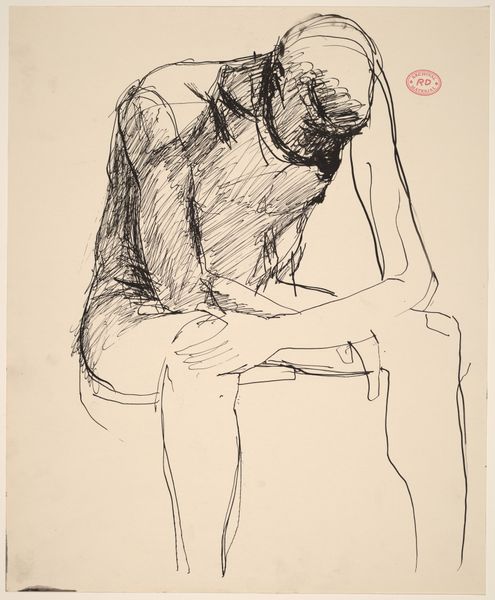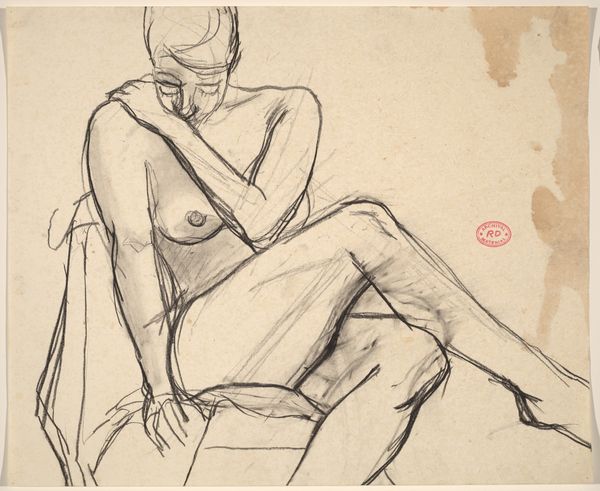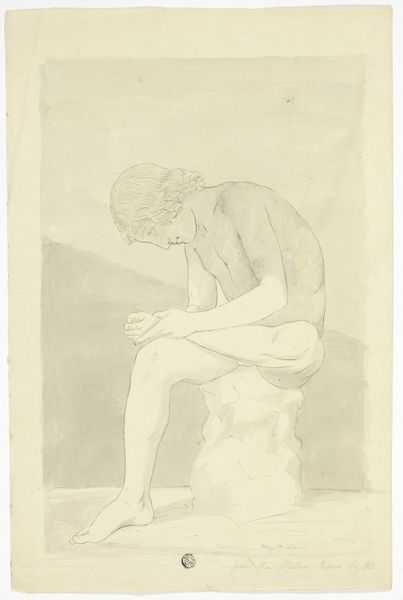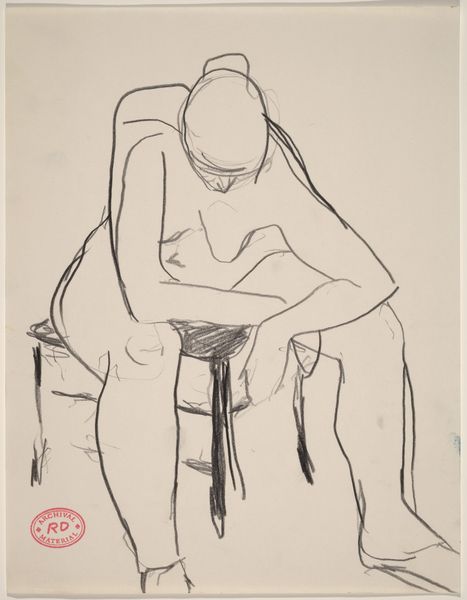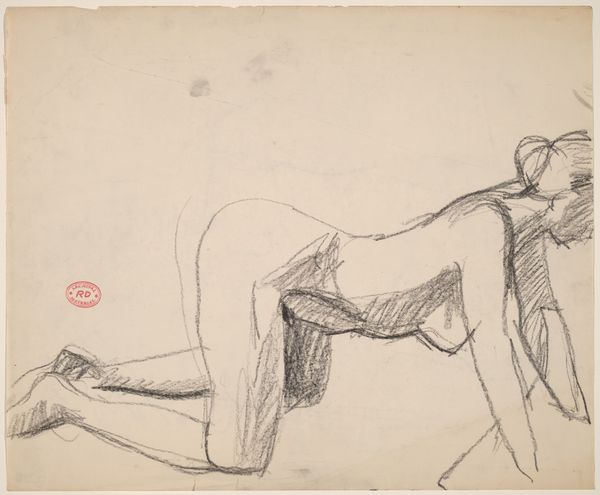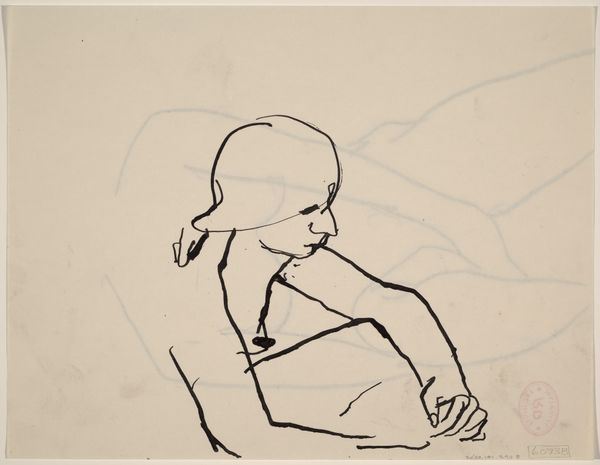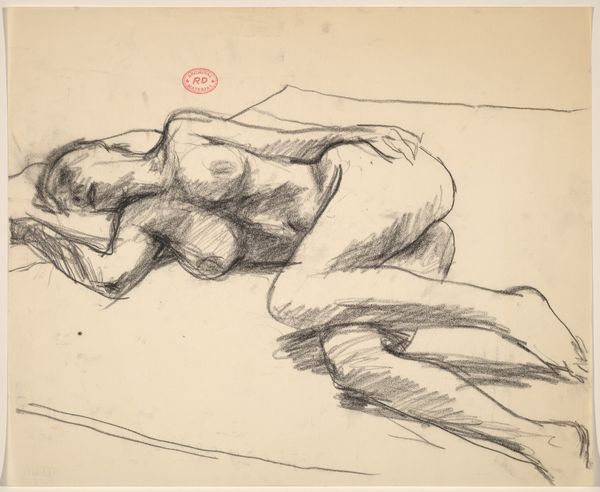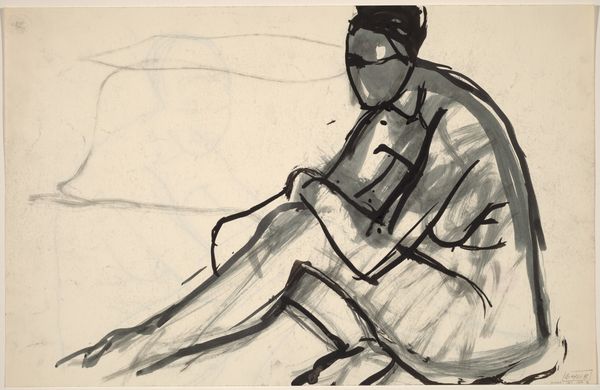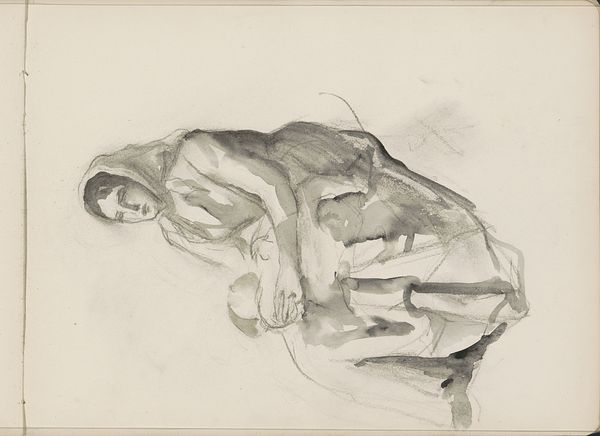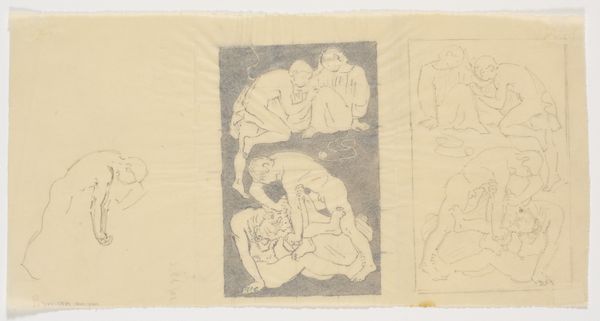![Untitled [two studies of a nude couple] by Richard Diebenkorn](/_next/image?url=https%3A%2F%2Fd2w8kbdekdi1gv.cloudfront.net%2FeyJidWNrZXQiOiAiYXJ0ZXJhLWltYWdlcy1idWNrZXQiLCAia2V5IjogImFydHdvcmtzLzM3NDFlZDdjLTc3NWYtNDZhNS1hMjg5LWZjMDUzOWYzZDBhNS8zNzQxZWQ3Yy03NzVmLTQ2YTUtYTI4OS1mYzA1MzlmM2QwYTVfZnVsbC5qcGciLCAiZWRpdHMiOiB7InJlc2l6ZSI6IHsid2lkdGgiOiAxOTIwLCAiaGVpZ2h0IjogMTkyMCwgImZpdCI6ICJpbnNpZGUifX19&w=3840&q=75)
#
bay-area-figurative-movement
Dimensions: overall: 45.5 x 60.6 cm (17 15/16 x 23 7/8 in.)
Copyright: National Gallery of Art: CC0 1.0
Editor: Here we have Richard Diebenkorn's "Untitled [two studies of a nude couple]," created sometime between 1955 and 1967, using ink and drawing. There is a sense of intimacy, but also a kind of facelessness, in these figures. How do you interpret this work? Curator: What strikes me immediately is the vulnerability inherent in the portrayal of the nude, and the layering of two figures. Who gets to take up space and who is erased or marginalized? Notice also the active erasure of the faces. What does this anonymity suggest about societal power structures related to visibility and representation at the time of its creation during the American Civil Rights era? Editor: I didn’t consider the context of the Civil Rights movement. The figures seem to blend together, almost as if one is supporting the other. Curator: Exactly. Could it be a visual representation of the way oppressed people often must unite and become interdependent in order to survive in unjust conditions? Do you see any kind of protest implied by the composition? Editor: Well, by stripping away individuality, could Diebenkorn be protesting the limited roles society assigns to certain people? It seems like he's focusing on shared human experiences, reducing the figures to their most essential forms. Curator: Precisely! By stripping away identifying features, Diebenkorn might be inviting us to reconsider the assumptions we make based on race and gender. He might even encourage us to be open to shared identity, rather than division. What do you make of this subversive use of abstraction, when viewed through an intersectional lens? Editor: I see what you mean. Viewing it through this context changes my entire perspective. The blank faces become powerful in their ambiguity. Curator: Right! Each element contributes to a critical exploration of how identity and representation intersect. I find it powerful and hopeful.
Comments
No comments
Be the first to comment and join the conversation on the ultimate creative platform.


